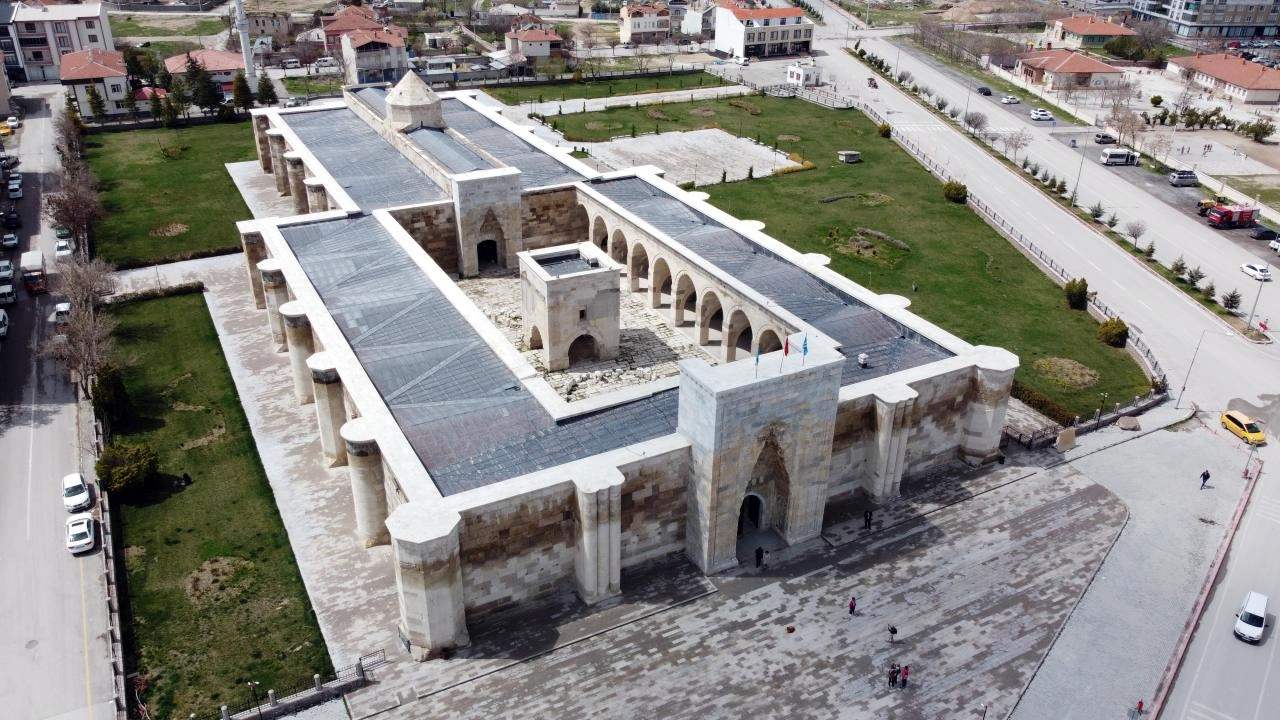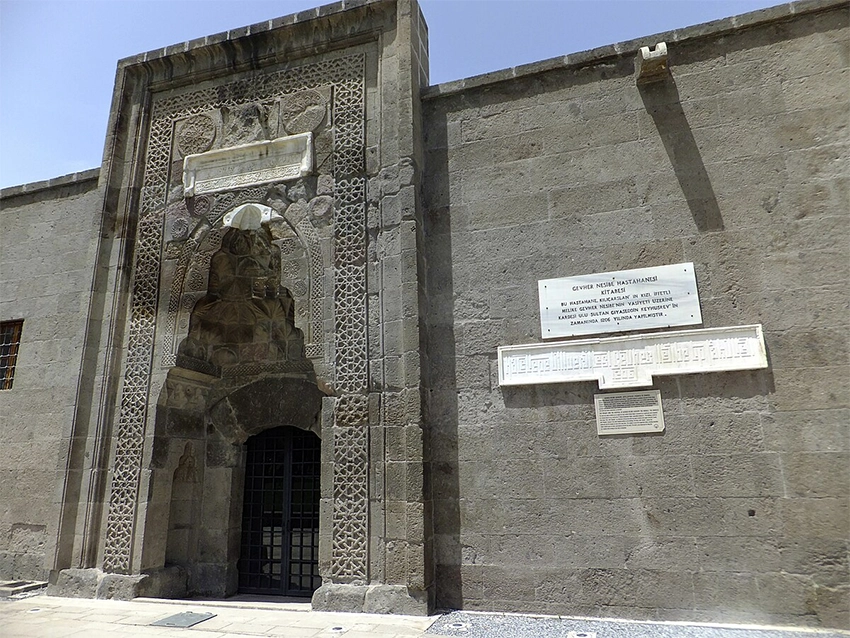Madrasahs & Caravanserais
Madrasas & Caravanserais of Cappadocia
Seljuk Heritage in Cappadocia
During the Middle Ages, Cappadocia flourished under the Seljuk Turks, who left behind not only fortifications and mosques but also caravanserais (roadside inns) and madrasas (theological schools). Built between the 11th and 13th centuries, these monuments reflect both the practical needs of Silk Road travelers and the intellectual spirit of medieval Anatolia. Today, visitors to Cappadocia can discover not just fairy chimneys but also these cultural landmarks.

Caravanserais – Fortresses of the Silk Road
The Seljuk caravanserais, literally “palaces for caravans,” were solid stone inns where traders could rest, store goods, and care for their animals. They often looked like small fortresses with monumental gates and thick walls.
- Sultanhanı Caravanserai (Aksaray, 1229): The largest in Anatolia, commissioned by Sultan Alaeddin Keykubad I. Its monumental entrance, decorated with intricate stone carvings, leads to a vast courtyard and covered winter hall.
- Sarıhan (Saruhan) Caravanserai (Nevşehir, 1249): Built during Sultan Izzeddin Keykavus II’s reign, combining open courtyard and closed sections. Restored in the 1990s, today it hosts whirling dervish ceremonies in its atmospheric courtyard.
- Ağzıkarahan Caravanserai (1231–37): Located on the Nevşehir–Aksaray road, once functioned not only as a lodging but also as a fairground, almost like one of the world’s first shopping centers.
- Karatay Han (Kayseri): Another fine example of Seljuk architecture with richly decorated stonework.

Architectural Features
Caravanserais were typically single-storied with a large courtyard surrounded by arcades. A prayer room (mescit) was often placed above the entrance gate. Intricate carvings with stars, geometric patterns, and tree-of-life motifs adorned the façades. Inside, animals were stabled in covered halls during winter, while traders enjoyed the open courtyards in summer. Beyond their practical role, these han structures became centers of commerce, social exchange, and safety along the Silk Road.
Madrasas – Centers of Learning
Alongside caravanserais, the Seljuks also founded madrasas, educational institutions that trained scholars in theology, philosophy, astronomy, and medicine.
- Çifte Medrese (Gevher Nesibe Complex, Kayseri, early 13th c.): Built by Sultan Gıyaseddin Keyhüsrev in memory of his sister Gevher Nesibe, it is considered one of the world’s first medical schools and hospitals. Today it serves as the Museum of Seljuk Civilization, where visitors can see original medical instruments and architectural details.
- Hunat Hatun Medrese (Kayseri, 1238): Commissioned by Mahperi Hunat Hatun, now used as a handicraft bazaar that preserves its historic atmosphere.
- Ak Medrese (Niğde, 1409): Dating to the Karamanid period, famed for its white marble entrance with exquisite stone carvings.

Structure and Atmosphere
Madrasas were built around courtyards with study rooms (cells) and large vaulted classrooms (iwans). They were not only schools but also cultural hubs, nurturing the intellectual life of medieval Anatolia.
Visiting Tips
- Check Hours: Opening times vary by season and events, especially for caravanserais hosting performances.
- Dress Modestly: Religious and historic sites require respectful attire; carry a light shawl or jacket for cool interiors.
- Photography: Stone carvings and monumental gates are best photographed in soft morning or evening light. Use a tripod for detail shots.
- Transport: Many caravanserais are outside town centers, so a car or guided tour is the easiest way to reach them.
Experience Highlights
- Sultanhanı Caravanserai: Witness Seljuk stonework at its most monumental. In summer, sunlight creates dramatic patterns on the carved portal.
- Sarıhan Caravanserai: Attend an evening whirling dervish ceremony in its courtyard; the combination of ritual and architecture creates an unforgettable atmosphere.
- Gevher Nesibe Madrasa: Explore a museum that blends science, medicine, and architecture, showcasing the Seljuk vision of learning.




